Effective Land Clearing: Importance and Proven Methods
- September 18, 2024
- 0 comment
Effective Land clearing plays a pivotal role in preparing land for various uses, from agriculture to urban development. This process, which involves removing vegetation and obstacles from a designated area, is crucial for making land suitable for cultivation, construction, or other purposes. Understanding the importance and methods of land clearing helps balance the benefits of development with the need for responsible environmental management.
The Importance of Land Clearing
Agricultural Development
Land clearing is essential for agricultural development as it prepares previously unusable land for farming and crop cultivation. By removing trees, shrubs, and other vegetation, the land becomes more accessible for planting crops, improving soil conditions, and enhancing irrigation systems. This process not only makes previously uncultivated areas suitable for farming but also increases the productivity of agricultural operations by expanding arable land. Enhanced land usability contributes to higher crop yields and can support food security and economic growth in agricultural communities.

Moreover, cleared land allows for better management practices, such as crop rotation and soil fertilization, which are crucial for maintaining soil health and preventing degradation. By converting forested or overgrown areas into productive farmland, farmers can optimize their use of resources and boost agricultural output. This transformation is a key driver in meeting the demands of a growing population and advancing agricultural technology.
Urban and Infrastructure Development
In urban and infrastructure development, land clearing is a critical step in preparing sites for construction projects, including housing, roads, and commercial areas. Removing vegetation and obstacles from land allows for the creation of essential infrastructure that supports economic growth and urban expansion. This process facilitates the construction of buildings, roads, and other infrastructure components necessary for modern living and business operations. The economic benefits of land clearing in urban contexts are significant, as it promotes development, generates jobs, and enhances the quality of life in growing cities.
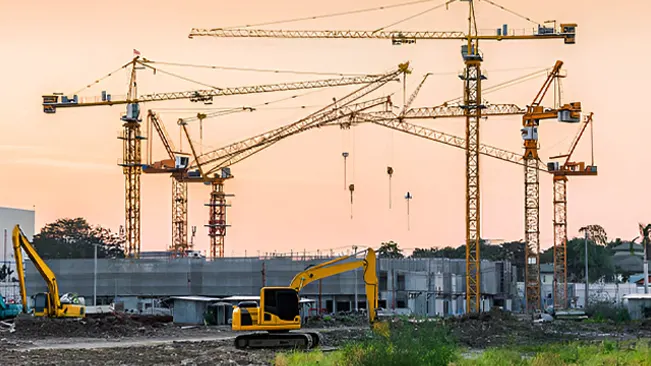
Clearing land for urban development also helps in planning and implementing effective city layouts and transportation networks. By preparing land for construction, municipalities can address housing shortages, improve public services, and support local economies. However, it is crucial to balance these benefits with considerations for environmental sustainability and urban planning to ensure responsible development practices.
Environmental Management
Land clearing plays a vital role in environmental management, particularly in wildfire prevention and habitat management. By removing dense vegetation and underbrush, land clearing reduces the fuel load for wildfires, helping to prevent uncontrolled fires that can devastate large areas. Additionally, managing land through controlled clearing can support habitat management efforts by maintaining healthy ecosystems and promoting biodiversity. This approach can also aid in the control of invasive species and diseases that threaten native flora and fauna.

Furthermore, land clearing is essential for managing and restoring degraded landscapes. Invasive species and plant diseases can be effectively controlled through targeted clearing, allowing for the re-establishment of native vegetation and the restoration of ecological balance. Responsible land clearing practices, combined with replanting and conservation efforts, contribute to long-term environmental health and resilience.
Methods of Land Clearing
Manual Clearing
Manual clearing involves the use of hand tools to remove vegetation from an area. Common tools include axes, machetes, and chainsaws. This method is often employed in smaller or more sensitive areas where precision and control are required. Manual clearing allows for detailed work and minimizes disruption to the surrounding environment. It’s particularly useful in areas with limited access or where machinery cannot operate efficiently.
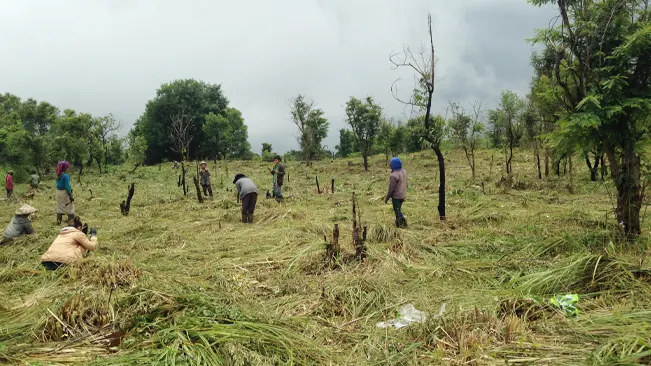
However, manual clearing can be labor-intensive and time-consuming, requiring significant physical effort and skill. It may also be less efficient compared to mechanical methods, especially over large areas. The scope of manual clearing is limited by the availability of labor and tools, and it may not be suitable for dense or extensive vegetation.
Mechanical Clearing
Mechanical clearing utilizes machinery such as bulldozers, excavators, and brush cutters to remove vegetation and obstacles from the land. This method is efficient for large-scale clearing projects, including those required for agriculture, construction, and infrastructure development. Mechanical clearing can quickly handle large volumes of vegetation and terrain, significantly reducing the time and labor involved compared to manual methods.
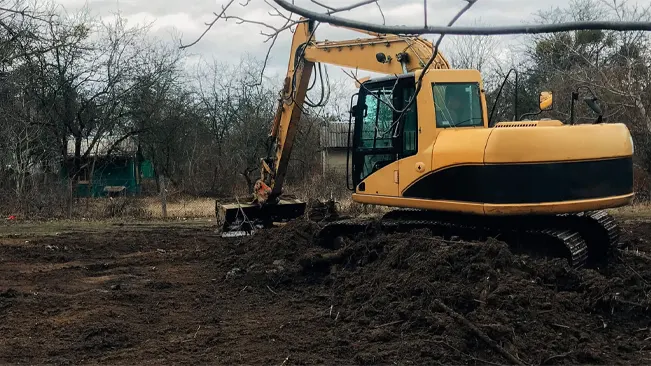
The advantages of mechanical clearing include its speed, efficiency, and ability to handle extensive areas. However, it also presents challenges such as potential soil disturbance, erosion, and damage to the surrounding environment. The use of heavy machinery can lead to compaction of the soil and disruption of existing ecosystems, necessitating careful planning and management to mitigate environmental impacts.
Chemical Clearing
Chemical clearing involves the application of herbicides and other chemicals to control and eliminate unwanted vegetation. Herbicides can effectively target specific types of plants, including invasive species, and can be used to manage large areas with minimal physical labor. This method is often employed in conjunction with other clearing techniques to address persistent vegetation or prepare land for further use.
While chemical clearing can be effective and efficient, it raises environmental and safety considerations. The use of herbicides may impact non-target plants, wildlife, and soil health if not managed properly. It is essential to follow safety guidelines and regulations to minimize risks to human health and the environment. Additionally, the potential for chemical runoff and long-term soil contamination must be carefully managed to ensure sustainable land management practices.
5 Benefits of Land Clearing
1. Enhanced Accessibility and Safety
Land clearing significantly improves accessibility and safety by removing obstructions such as trees, shrubs, and debris. This creates unobstructed paths for vehicles, equipment, and pedestrians, facilitating easier movement across the property.
The reduction of potential tripping hazards and falling branches also lowers the risk of accidents and injuries. Furthermore, removing dense vegetation can mitigate wildfire risks, as accumulated dead and dry plant material can be highly flammable and exacerbate fire spread.
2. Increased Property Value
Clearing land can substantially enhance property value by increasing its aesthetic appeal and functional versatility. A clear, open space is often more attractive to potential buyers or renters and can command higher market prices.
Cleared land also offers greater flexibility for various uses, including agriculture, construction, or recreational activities. In some cases, local zoning laws may require land clearing to meet development standards, thereby increasing the property’s potential for various uses and boosting its market value.
3. Boosted Agricultural Productivity
For agricultural applications, land clearing is vital for maximizing crop yields and operational efficiency. Removing trees, rocks, and other obstacles allows for the creation of larger, more uniform fields, which are easier to cultivate and manage.
Improved land preparation enhances irrigation and drainage systems, reducing the risk of waterlogging and soil erosion. Additionally, cleared fields can aid in pest and disease management by eliminating habitats for pests, ultimately increasing agricultural productivity and profitability.
4. Wildlife Habitat Restoration
While land clearing involves the removal of existing vegetation, it can also support wildlife habitat restoration when done thoughtfully. Strategic clearing can create new habitats, such as open grasslands for grazing animals or wetlands for amphibians and birds.
This approach can also help control the spread of invasive species that threaten native ecosystems. By carefully planning the clearing process, you can foster a more balanced and diverse environment that supports various wildlife species and promotes ecological health.
5. Streamlined Construction and Development
Land clearing is a critical step in preparing sites for construction and development. Removing vegetation and debris provides a clear, level surface that simplifies the process of laying foundations, building roads, and installing utilities.
This preparation can reduce the time and costs associated with site development by eliminating the need for additional clearing later. Early land clearing also helps identify and address potential construction challenges, leading to a more efficient project timeline and budget management.
Post-Clearing Management
Erosion Control and Soil Conservation
After land clearing, erosion control and soil conservation are crucial to prevent soil degradation and maintain land health. Without vegetation, the soil becomes highly susceptible to erosion from wind and water. Implementing erosion control measures, such as silt fences, sediment basins, and erosion control blankets, helps to stabilize the soil and reduce runoff. Additionally, techniques like contour plowing, terracing, and planting cover crops can further protect the soil from erosion and improve its structure and fertility.

Soil conservation efforts also involve managing water flow to prevent excessive runoff that can carry away topsoil. Implementing proper drainage systems and maintaining vegetative cover, even if temporary, helps to absorb water and reduce the impact of rainfall. These practices not only preserve the soil but also support the long-term sustainability of the land for future use, whether for agriculture, development, or natural habitats.
Replanting and Restoration Efforts
Replanting and restoration are key steps in rehabilitating land after clearing. This process involves reintroducing native plant species to restore the ecological balance and support biodiversity. Planting trees, shrubs, and ground cover species helps to rebuild natural habitats, provide shelter and food for wildlife, and improve soil health. Restoration efforts may also include removing invasive species that could outcompete native plants and disrupt the ecosystem.

In addition to replanting, restoration can involve soil amendments, such as adding organic matter or nutrients, to support the growth of new vegetation. This holistic approach helps to create a stable and resilient ecosystem that can recover from the impacts of clearing and sustain its ecological functions over time. Successful replanting and restoration contribute to environmental conservation and enhance the land’s value for future generations.
Ongoing Maintenance and Monitoring
Ongoing maintenance and monitoring are essential to ensure the success of post-clearing management efforts. Regular inspections of erosion control measures, vegetation growth, and soil conditions help to identify and address potential issues early. Maintenance activities may include repairing erosion control structures, managing invasive species, and providing additional plantings or soil amendments as needed.

Monitoring also involves tracking the progress of restoration efforts and assessing the health of the reintroduced vegetation. This can include measuring plant survival rates, monitoring wildlife activity, and evaluating the overall ecological impact. Ongoing maintenance and monitoring help to adapt management practices based on observed outcomes and ensure that the land remains productive and ecologically balanced over time.
Conclusion
In conclusion, land clearing is a fundamental process with significant implications for accessibility, property value, agricultural productivity, wildlife habitat, and construction efficiency. By removing vegetation and obstacles, land clearing facilitates safer navigation, enhances the usability of land, and opens up opportunities for various developments. Whether for agricultural, urban, or environmental purposes, understanding the different methods and their impacts helps in making informed decisions that balance progress with sustainability.
FAQs
- What is land clearing?
Land clearing is the process of removing trees, shrubs, vegetation, and other obstacles from a plot of land. This is done to prepare the land for various uses such as agriculture, construction, or development. - Why is land clearing important?
Land clearing is important for several reasons, including improving accessibility, enhancing property value, increasing agricultural productivity, restoring wildlife habitats, and facilitating construction and development. It helps create usable space and supports various land-based activities and projects. - What are the benefits of manual clearing?
Manual clearing allows for precise control and is suitable for smaller or sensitive areas. It minimizes disturbance to the environment but can be labor-intensive and time-consuming. - What are the advantages of mechanical clearing?
Mechanical clearing is efficient for large-scale projects and can handle extensive vegetation quickly. It reduces manual labor and speeds up the clearing process but may cause soil compaction and environmental disruption. - What are the environmental considerations of chemical clearing?
Chemical clearing can be effective but requires careful management to avoid harming non-target plants, wildlife, and soil health. Proper application and adherence to safety guidelines are essential to minimize environmental risks. - How can erosion be controlled after land clearing?
Erosion control can be managed through measures such as silt fences, sediment basins, and erosion control blankets. Implementing proper drainage and maintaining some vegetative cover can also help prevent soil loss. - Why is replanting and restoration important after clearing land?
Replanting and restoration are crucial for rebuilding ecosystems, enhancing soil health, and supporting wildlife. These efforts help restore natural habitats, control erosion, and improve biodiversity. - What does ongoing maintenance involve after land clearing?
Ongoing maintenance includes monitoring erosion control structures, managing vegetation, and assessing soil conditions. Regular inspections help ensure that the land remains stable and productive. - How does land clearing impact property value?
Land clearing can increase property value by improving its appearance and usability. Cleared land is often more attractive to buyers and can be used for a wider range of purposes, enhancing its market potential. - Can land clearing help with wildfire prevention?
Yes, land clearing can reduce wildfire risks by removing dry and dense vegetation that can fuel fires. Proper clearing can help create defensible space and manage vegetation to lower the likelihood of uncontrolled fires.

Joel Cunningham
Forestry AuthorI'm Joel Cunningham, an expert in pruning and weed management with over a decade of experience. My skills are rooted in formal training and extensive practice, focusing on advanced pruning techniques and efficient weed control. I'm known for my quality work, precision, and deep understanding of plant health and soil dynamics. My contributions extend to educational initiatives where I share sustainable practices and advice, establishing myself as a reliable and authoritative figure in the gardening community.


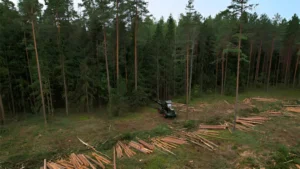


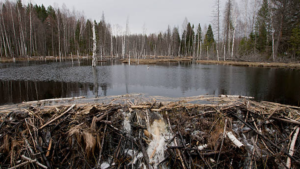



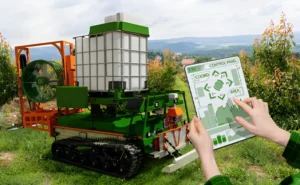



Leave your comment